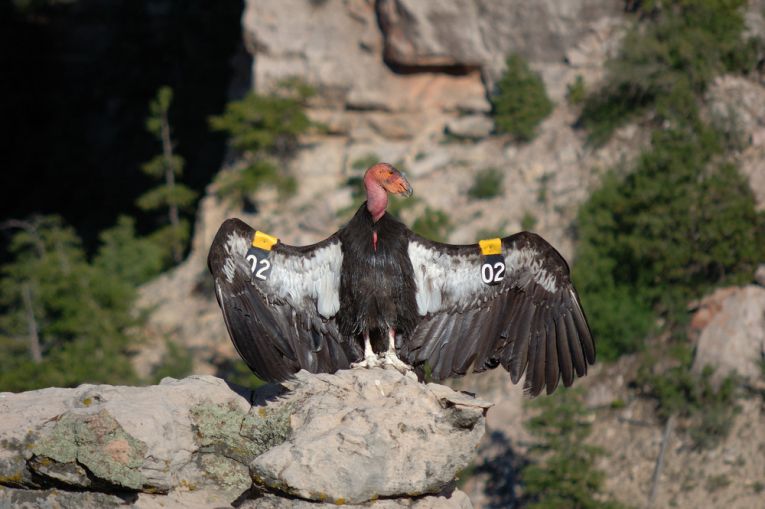We have to love the Californian condor, Gymnogyps californianus even though most of us don't like vultures. The life of these now re-introduceed birds has been made unbearable with lead poisoning recently. The cause is lead bullets, and with a superfluity of game hunters, the need to switch to other metals is obvious, just as the US military has done. Silver bullets would be unnecessary, but given the handy mines, its use would be possible and forgivable. To its credit, California has already come to the aid of the state bird by banning lead bullets, but one state is not enough.
The Natural History Magazine story is published by Dawn Starin as Condors and Carcasses.
The path taken by lead ions in the condor's body is similar to that taken through the human body. Anaemia, brain damage and renal problems are the usual effects, just as caused by many other heavy metals. The birds have to be intravenously given binding chemicals to remove the lead from the body. A month later, the individual is often fit once more, but such expensive and debilitating treatment still fails in some cases. Other sources of lead are claimed by critics. Apart from paint on old buildings, leaded gasoline in the soil and mining waste have all proved non-viable according to scientific investigations.
The gun is the culprit. Lead isotope values in 110 free-flying individuals matched exactly those in ammunition or fragments, with only 5 found with traces of lead-based paint isotope values (from an old fire tower). It is those fragments that most easily find their way into the scavenging condors. They eat either dead game or even "normally-managed" animals that have been shot. Then the dissolved lead enters the bloodstream from their intestine.
Following the tragic extinction "event" in 1987, the specially bred and rehabilitated birds were slowly settled in specially-chosen areas in the mountains. What has happened since then is a partial recovery of the condor population. The tragedy is that, "lead poisoning of California condors from feeding on the carcasses of animals shot by hunters, ranchers, and poachers is the principal obstacle to conservation and recovery of the species," according to the USFWS's John McCamman. To add to his voice, the Ventana Wildlife Society has been handing out free non-lead ammunition to hunters for 2 years because it also believes the lead has to be stopped.
What the world gains from the essential ban is a species of condor that is critically-endangered, having been declared extinct in 1987. After the careful breeding of all the collected birds, it is now possible to view the small population gliding over the Rockies in more than 3 states. All or our scavenging vulture habitats worldwide are now under threat. Poisoners in Africa and bullets in America will rob us of the final few species occupying an invaluable niche in our environment. Good luck to those fighting the rifles and their traditional ways.
We do have a connected story in the Andean condor, which is distantly related. There is a connection with more normal hunting styles. The puma population in Patagonia, at least, is able to help out the endangered species as described in this article on Puma and scavengers.










